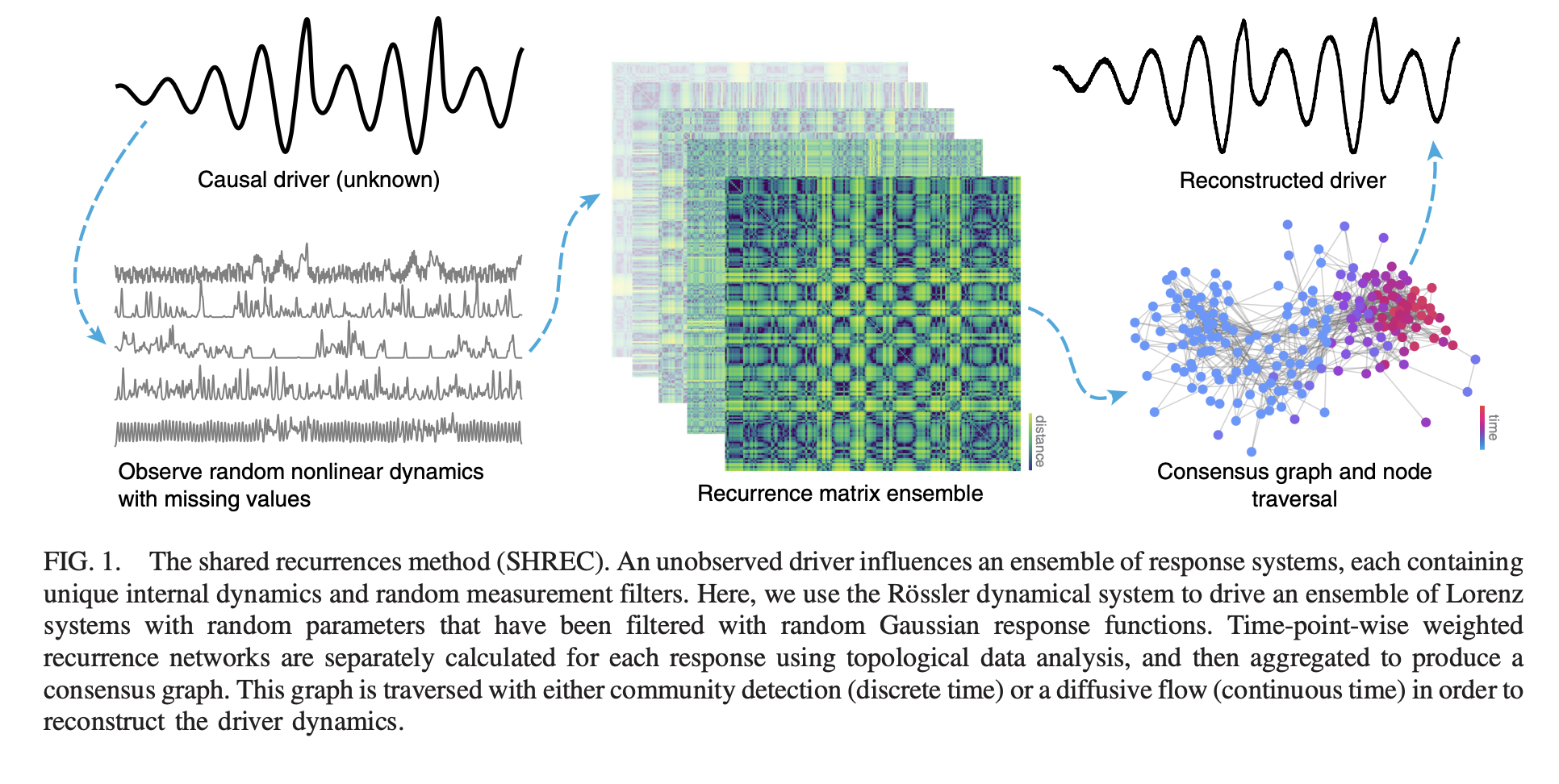
Understanding the Challenge of Causal Driver Reconstruction
Reconstructing unknown factors that influence complex time series data is a significant challenge in many scientific fields. These hidden factors, such as genetic influences or environmental conditions, are vital for understanding how systems behave but are often not measured. Current methods struggle with noisy data, complex systems, and the ability to analyze nonlinear interactions. This progress is essential for improving models, predictions, and control in areas like systems biology, ecology, and fluid dynamics.
Limitations of Existing Techniques
Common methods for reconstructing causal factors often rely on signal processing or machine learning. Techniques such as mutual information, neural networks, and dynamic attractor reconstruction can be effective, but they face serious limitations:
- They typically require large, high-quality datasets, which are hard to find.
- They are sensitive to measurement noise, leading to inaccurate results.
- Many involve complex algorithms that are not suitable for real-time applications.
- They often lack physical principles, making them less interpretable across different fields.
Introducing SHREC: A New Solution
Researchers at The University of Texas have developed a new approach called SHREC (Shared Recurrences) that uses a physics-based unsupervised learning framework to reconstruct causal drivers from time series data. This innovative method is grounded in the theory of skew-product dynamical systems and topological data analysis.
Key Features of SHREC
SHREC offers several advantages:
- It uses recurrence events in time series to uncover common causal structures.
- A consensus recurrence graph reveals the dynamics of hidden drivers.
- The framework effectively handles noisy and sparse data with minimal tuning required.
How SHREC Works
The SHREC algorithm operates in multiple stages:
- It converts response time series into weighted recurrence networks.
- A consensus graph captures overall dynamics from individual time series.
- Community detection algorithms link discrete drivers, while graph decomposition reveals transient modes for continuous drivers.
SHREC has been tested on various datasets, including gene expression, plankton populations, and turbulent flows, demonstrating excellent performance even with high noise and missing data.
Proven Success Across Different Domains
SHREC has consistently outperformed traditional methods, successfully reconstructing key factors in:
- Gene expression datasets, identifying crucial regulatory components.
- Turbulent flow studies, detecting forcing factors effectively.
- Ecological data, revealing impacts of temperature on plankton trends despite missing information.
Why Choose SHREC?
SHREC is a robust, physics-based unsupervised learning approach that addresses the issues of current techniques, such as noise sensitivity and high computational costs. It leverages recurrence structures and topological embeddings to enhance the accuracy of causal driver reconstruction.
This framework shines in its applicability across various fields, including biology, physics, and engineering, making it a powerful tool for improving AI-driven modeling.
Get Involved and Explore AI Solutions
To learn more about this research, check out the paper. Follow us on Twitter, join our Telegram Channel, and connect with our LinkedIn Group. Don’t forget to join our 65k+ ML SubReddit.
If you’re looking to integrate AI into your business, consider the benefits of SHREC. Discover how AI can enhance your operations:
- Identify automation opportunities for customer interactions.
- Define KPIs to measure the impact of your AI initiatives.
- Select AI solutions that fit your needs and allow customization.
- Implement gradually by starting with a pilot project.
For more advice on AI KPI management, reach out to us at hello@itinai.com. Stay updated on AI insights through our Telegram channel t.me/itinainews or follow us on Twitter @itinaicom.
Explore more about how AI can transform your sales processes and customer engagement at itinai.com.



























